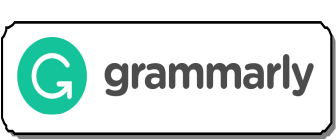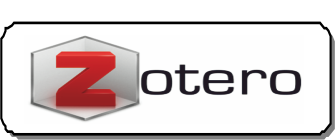Integrating Moroccan Islamic Intellectual Heritage into Contemporary Islamic Education: A Systematic Literature Review
Abstract
This systematic literature review examines the intersection of Moroccan Islamic intellectual heritage and contemporary education. The purpose is to explore how this rich heritage, encompassing philosophy, theology, sciences, literature, and arts, can be integrated into modern educational practices. The methodology involves a comprehensive analysis of scholarly articles, book chapters, and other relevant sources, using a systematic approach to identify, assess, and synthesize existing research. Findings reveal the historical development of Islamic thought in Morocco, highlighting key figures and their contributions, as well as the influence of local traditions. The review explores various types of Islamic educational institutions, curricula, and teaching approaches, along with the roles of governmental and non-governmental organizations. Challenges in contemporary Islamic education, such as the impacts of modernization, globalization, and the integration of traditional values into curricula, are also investigated. The review emphasizes that integrating the Moroccan Islamic intellectual heritage into contemporary education can foster critical thinking, promote moral values, and cultivate respect for cultural and traditional values. This integration holds significant implications for shaping identity, promoting innovation, and enriching the educational experience for students. The originality of this review lies in its comprehensive synthesis of diverse perspectives, providing valuable insights for educators, policymakers, and researchers interested in the revitalization of Islamic intellectual traditions within the context of contemporary education in Morocco.
References
Boum, A. (2008). The Political Coherence of Educational Incoherence: The Consequences of Educational Specialization in a Southern Moroccan Community. Anthropology & Education Quarterly, 39(4), 399–418. https://doi.org/10.1111/j.1548-1492.2008.00016.x
Boyle, H. N., & Boukamhi, A. (2018). Islamic Education in Morocco. In International handbooks of religion and education (pp. 1–18). Springer Nature. https://doi.org/10.1007/978-3-319-64683-1_37
Carmichael, T., & Davidson, B. (1995). Modern Africa: A Social and Political History. The History Teacher, 28(4), 575. https://doi.org/10.2307/494647
Daun, H., & Walford, G. (2004). Educational strategies among Muslims in the context of globalization. BRILL. https://doi.org/10.1163/9789047402923
Daun, H., & Walford, G. (2004). Educational Strategies among Muslims in the Context of Globalization. BRILL eBooks. http://ci.nii.ac.jp/ncid/BA70485961
Ezzahid, E., & Elouaourti, Z. (2021). Financial inclusion, mobile banking, informal finance and financial exclusion: micro-level evidence from Morocco. International Journal of Social Economics, 48(11), 1545–1564. https://doi.org/10.1108/ijse-11-2020-0747
Falah, G., & Nagel, C. (2006). Geographies of Muslim women: gender, religion, and space. Choice Reviews Online, 43(08), 43–3092. https://doi.org/10.5860/choice.43-3092
Goldstein, J. L., & Eickelman, D. F. (1986). Knowledge and Power in Morocco: The Education of a Twentieth-Century Notable. Ethnohistory, 33(3), 233–253. https://doi.org/10.2307/482051
Harrigan, J., & El‐Said, H. (2010). Economic liberalisation, social capital and Islamic welfare provision. Choice Reviews Online, 47(09), 47–5765. https://doi.org/10.5860/choice.47-5765
Hefner, R. W., & Zaman, M. Q. (2007). Schooling Islam: The Culture and Politics of Modern Muslim Education. Princeton University Press. http://ci.nii.ac.jp/ncid/BA81470321
Kalmbach, H. (2008). Social and Religious Change in Damascus: One Case of Female Islamic Religious Authority†. British Journal of Middle Eastern Studies, 35(1), 33–49. https://doi.org/10.1080/13530190801890238
Kaakeh, A., Hassan, M. K., & Almazor, E. V. H. (2018). Attitude of Muslim minority in Spain towards Islamic finance. International Journal of Islamic and Middle Eastern Finance and Management, 11(3), 350–367. https://doi.org/10.1108/imefm-11-2017-0306
Kalpakian, J. (2005). Building the Human Bomb: The Case of the 16 May 2003 Attacks in Casablanca. Studies in Conflict & Terrorism, 28(4), 281–297. https://doi.org/10.1080/10576100590905093
Kane, O. (2007). Moderate Revivalists: Islamic Inroads in Sub-Saharan Africa. Harvard international review, 29(2), 58–61.
Keddie, N. R. (1973). Is There A Middle East? International Journal of Middle East Studies, 4(3), 255–271. https://doi.org/10.1017/s0020743800031457
King, E. M., & Hill, M. A. (1993). Women's education in developing countries: Barriers, benefits, and policies. The World Bank. https://doi.org/10.1596/0-8018-4534-3
Maliepaard, M., & Lubbers, M. (2012). Parental Religious Transmission after Migration: The Case of Dutch Muslims. Journal of Ethnic and Migration Studies, 39(8), 1263–1282. https://doi.org/10.1080/1369183x.2013.733862
Mazzei, S. (2024). The Identity Construction in Arab-Islamic Education Systems Into the Experiences of People from Morocco and Syria Living in Europe. The Journal of Education in Muslim Societies, 7(1), 181–208. https://doi.org/10.2979/jems.00005
Mendoza, B., Tarrés, M. B., & Rovira, J. (2021). Feminism, Islam and higher education: towards new roles and family relationships for young Spanish-Moroccan Muslim women in Spain. Race Ethnicity and Education, 24(5), 679–695. https://doi.org/10.1080/13613324.2021.1890565
Miville, N. (2008). The viability of Islam in the inclusion of women in development : a case study of Moroccan informal Islamic education networks. https://library2.smu.ca/bitstream/01/22795/1/miville_nadine_masters_2008.PDF
Moghadam, V. M. (2008). Feminism, legal reform and women's empowerment in the Middle East and North Africa. International Social Science Journal, 60(193-194), 339–356. https://doi.org/10.1111/j.1468-2451.2009.00673.x
Niethammer, C., & Seyedsayamdost, E. (2005). The status and progress of women in the Middle East and North Africa. The World Bank. http://documents.albankaldawli.org/curated/ar/613291468052754440/The-status-and-progress-of-women-in-the-Middle-East-and-North-Africa
Paradise, T. R. (2005). Perception of earthquake risk in Agadir, Morocco: A case study from a Muslim community. Environmental Hazards, 6(2), 142–156. https://doi.org/10.1016/j.hazards.2006.06.002
Ross, M. L. (2001). Does Oil Hinder Democracy? World Politics, 53(3), 325–361. https://doi.org/10.1353/wp.2001.0011
Sadiqi, F., & Ennaji, M. (2013). Women in the Middle East and North Africa. Routledge. https://doi.org/10.4324/9780203851579
Salvatore, A., & Eickelman, D. F. (2004). Public Islam and the Common Good. BRILL. https://doi.org/10.1163/9789047402824_003
Sellin, É., & Mernissi, F. (2002). Scheherazade Goes West: Different Cultures, Different Harems. World Literature Today, 76(1), 29–37. https://doi.org/10.2307/40157610
Timmerman, C., Vanderwaeren, E., & Crul, M. (2003). The Second Generation in Belgium. International Migration Review, 37(1), 119–145. https://doi.org/10.1111/j.1747-7379.2003.tb00170.x
Vertovec, S., & Rogers, A. (2018). Muslim European Youth. Routledge. https://doi.org/10.4324/9780429451
Copyright (c) 2025 Youssef Chraibi, Aicha Bouzidi

This work is licensed under a Creative Commons Attribution-ShareAlike 4.0 International License.
Please find the rights and licenses in SYAMIL Jurnal Pendidikan Agama Islam (Journal of Islamic Education). By submitting the article/manuscript of the article, the author(s) agree with this policy. No specific document sign-off is required.
1. License
The non-commercial use of the article will be governed by the Creative Commons Attribution license as currently displayed on Creative Commons Attribution-ShareAlike 4.0 International License.
2. Author(s)' Warranties
The author warrants that the article is original, written by stated author(s), has not been published before, contains no unlawful statements, does not infringe the rights of others, is subject to copyright that is vested exclusively in the author and free of any third party rights, and that any necessary written permissions to quote from other sources have been obtained by the author(s).
3. User/Public Rights
SYAMIL spirit is to disseminate articles published are as free as possible. Under the Creative Commons license, SYAMIL permits users to copy, distribute, display, and perform the work for non-commercial purposes only. Users will also need to attribute authors and Register on distributing works in the journal and other media of publications. Unless otherwise stated, the authors are public entities as soon as their articles got published.
4. Rights of Authors
Authors retain all their rights to the published works, such as (but not limited to) the following rights;
Copyright and other proprietary rights relating to the article, such as patent rights,
The right to use the substance of the article in own future works, including lectures and books,
The right to reproduce the article for own purposes,
The right to self-archive the article (please read out deposit policy),
The right to enter into separate, additional contractual arrangements for the non-exclusive distribution of the article's published version (e.g., post it to an institutional repository or publish it in a book), with an acknowledgment of its initial publication in this journal (SYAMIL Jurnal Pendidikan Agama Islam (Journal of Islamic Education)).
5. Co-Authorship
If the article was jointly prepared by more than one author, any authors submitting the manuscript warrants that he/she has been authorized by all co-authors to be agreed on this copyright and license notice (agreement) on their behalf, and agrees to inform his/her co-authors of the terms of this policy. SYAMIL will not be held liable for anything that may arise due to the author(s) internal dispute. SYAMIL will only communicate with the corresponding author.
6. Royalties
Being an open accessed journal and disseminating articles for free under the Creative Commons license term mentioned, author(s) aware that SYAMIL entitles the author(s) to no royalties or other fees.
7. Miscellaneous
SYAMIL will publish the article (or have it published) in the journal if the article’s editorial process is successfully completed. SYAMIL editors may modify the article to a style of punctuation, spelling, capitalization, referencing and usage that deems appropriate. The author acknowledges that the article may be published so that it will be publicly accessible and such access will be free of charge for the readers as mentioned in point 3.












